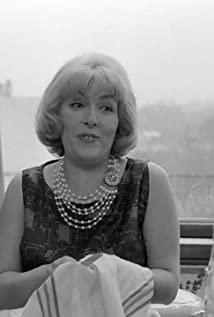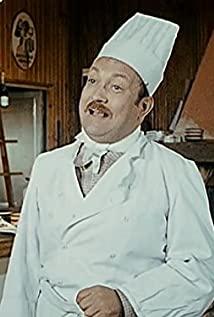The final assignment of "The History of World Architecture Development in the Twentieth Century" has a lot of connection with the film text, so it can be published as a film review after collating the format.
well! So who do you love, unusual stranger? "
"I love clouds...the past clouds...over there...over there...a wonderful cloud!"
——Charles Baudelaire, "The Melancholy of Paris: A stranger"
What is Paris? For everyone who has never been to the field but is devoted to this question, the public image can provide them with some kind of answer. In this film "Play Time", written and directed by the French director Jacques Tati, the audience's eyes can follow the traces of two groups of strangers to roam indoors and outdoors in Paris. There are two different reasons why they are called "foreigners". One group is American tourists from the other side of the Atlantic, their homeland certainly does not belong to the capital of France; the other group has only the protagonist of the film, Mr. Yu Luo, who came from a small town to do business in a big city, but was lost in this piece of the motherland. On the land. As the plot of the film unfolds, the audience will gradually discover such a joking fact: as foreigners, American tourists are far more adapted to the modern urban environment of Paris than Mr. Yu Luo, as if they are not in France but in the United States. In a certain place, in comparison, Mr. Yu Luo became more thoroughly "a stranger among foreigners".
In this situation, director Tati seems to have deliberately intertextualized with Baudelaire’s prose poem titled "A stranger". Before focusing on the urban landscape, the beginning of the film is a long paragraph against the blue sky. The appearance of white clouds. Then, when the camera slowly moved to the right side of the screen, a joke-like jump cut suddenly broke in-a building wrapped in glass and metal stood upright in the eyes of the audience. In this way, the film instantly transitions its scene to Paris as a modern city, where there are many modern buildings, modern facilities, and modern features everywhere. It is in this modern space that Mr. Yu Luo, who wanders in it, is constantly aware of his identity in a foreign land, and thus becomes increasingly at a loss what to do.
1 Material: Glass that reshapes sensibility
"The housing problem is a problem of the age "-we can extend the "residential" in Le Corbusier's sentence to "building", because the symptoms of an era will always be solidified in its architecture in a material way Characterization. Paris in the 1960s was modern Paris. The buildings built on both sides of the street were modern buildings. It may be self-evident that the “modern” here does not only refer to a period of time, it also represents a style, even A kind of doctrine. The modernity of Paris is established, manifested and confirmed by the modernity of Parisian architecture.
So, what gives Parisian architecture the characteristics of modernity? Most audiences who have watched the film will be impressed by a core object, which is the "glass" that appears repeatedly in the film. The large-scale use of glass constitutes an important component of the foundation of modern building materials, and under the guidance of the Bauhaus design concept represented by Gropius, glass and metal have expanded from partial components to the main body of the exterior wall. The material level forms a modern beauty that is different from the traditional transparency, lightness, cleanliness, and simplicity.
However, when this modern aesthetic that breaks through the stereotypes evolves into a turbulent torrent sweeping the society, modernism itself has become a new stereotype, and architecture is no exception. First of all, to summarize the image functions of glass in "Playing Time", they can be summarized into three categories: (1) Reflection . Through the glass wall and glass door as the reflecting surface, the audience can see the image of the object outside the lens angle of view. This not only expands the visual space of the movie, but also makes it possible to insert metaphors. For example, in the scene of the American female tourist opening the glass door, the Eiffel Tower, a landmark in Paris, is reflected on the glass on the left. The frustration of tourists not meeting the "real Paris" is also revealed from it. (2) Refraction . In the interior of a building with many glass surfaces, the reflected image on one piece of glass may be transferred to the asymmetrical position of another piece of glass through the refraction of light, thus forming a "mirage"-like sense of confusion. Of course, it mainly confuses the characters in the film. When Mr. Yu Luo was looking for the clerk in the glass building, he mistakenly thought that the reflection on the glass of the next building was the clerk himself, but the clerk stayed in the original building. (3) Blocking . For vision, glass means opening; but for touch, glass means blocking. The material characteristic of glass is that it seems to be nothing but it is not. It can resolutely separate the space inside and outside as well as the inside of the space physically. As a result, under the material mechanism of glass, "not seeing" constitutes a kind of joke in "Playing Time", and may even cause the tragedy of the clerks accidentally hitting the glass door with their face.
Regarding glass, Benjamin once said: “ Generally speaking, glass is the enemy of secrets. Glass is also the enemy of possession. ” These two sentences just highlight the influence of glass materials on the two perceptual methods: In terms of vision, the gaze that penetrates the glass is no longer obscured by the secret of viewing; for the sense of touch, the body cannot even touch through the glass. What about possession? Therefore, the reshaping of sensibility by glass is that it separates vision and touch, and interrupts the logical identity of the two in the traditional perceptual world in a medium way. It is for this reason that Mr. Yu Luo, who have not yet adapted to this "new perceptual world", will feel puzzled inside and outside the space of modern architecture, and even "hit the wall" abruptly.
2 Space: the plane of geometric cutting
If glass, metal, concrete, etc. constitute the materials of modern architecture, then the modern planning of space belongs to the category of modern architectural forms. In the eyes of many philosophers, artists, and ideological people, form is often closer to essence than material. Therefore, it is also a very important process to observe how a modern building organizes its materials and constructs its space through images.
"Playing Time" draws a picture of the entire urban landscape of modern Paris, which shows the interior spaces of various buildings. The first thing the audience appreciates is the internal planning of public buildings. Regardless of whether it is an airport or an office building, the form and layout of the two show great similarities. From the morphological point of view , they consistently maintain the flatness of the pursuit of precision in the cross section, longitudinal section and vertical section. Whether it is walls, floors, ceilings, or even elevator doors, all the surfaces are seamlessly patched together. The space itself hardly accommodates the existence of any protrusions and recesses. As a result, Mr. Yu Luo, who is indoors, is often lost because it is difficult for a machine-like flat "square box" to provide an inherent location mark. From the perspective of layout , according to the needs of function and efficiency, the indoor spaces of the airport and office buildings are cut into a series of precisely arranged geometric blocks, so that the crowd can shuttle among the many small boxes in the big box in an orderly manner-of course , Except for Mr. Yu Luo. Obviously, everyone who lacks understanding of the functionalist layout of modern architecture like Mr. Yu Luo is bound to feel a little panicked and confused when facing this situation. For the insiders, such a space setting brings simplicity and convenience; but for the "foreigners" from outside, the space of modern architecture is more like a "maze" that can neither enter nor go out. .
When the lens shifts from public buildings to private houses, viewers can also discover the singularity of modern space. On the one hand, the geometrical planarity logic of the space continues into the design of the private house. The apartment of Mr. Yu Luo's former comrade-in-arms is not only in the shape of a neat and simple flat square box, but even the TV set is "tightly fit". Embedded in the wall, the convexity of the space itself is eliminated again; on the other hand, this flat space design shows the audience such a playful effect, that is, the interiors of all apartments look almost exactly the same, just like the airport and The office building does not have much visual difference in the eyes of the audience. However, the deeper contrast lies in the fact that even people living in similar spaces do not know each other. The flatness of the same structure only represents the appearance of life, while the true modern interpersonal relationship is extremely cold and distant. Even if the neighbors are separated by the same thin wall, even if they are doing the same thing (watching TV), they do not have any connection. In other words, the planarity of space just helps the stratification of life, and people will not intersect even if they are parallel on different levels.
3 Effect: modern people without traces
In the joint planning of modern materials and plane space, the modern architecture of Paris—that is, the movie scene of "Playing Time"—has gradually established and proliferated as the main substrate of a modern city. Wandering in Paris like this, whether Mr. Yu Luo has visited before, he will feel such a strange dizziness, which is a sense of deviation and confusion caused by encountering modernity. This modern city constructed by modern buildings shows its weirdness to Mr. Yu Luo with a certain uniformity in the film. For example, the whole movie is full of gray monotones. No matter the exterior walls of buildings, interiors, objects and facilities, and even the clothing of the characters, they are all wrapped in dark coats, even the elevator cabins and cabins. The difference in color can't be distinguished outside. Behind the visual unity is the flat social condition. Parallel to the unification of inertia is the process of gradual obliteration of individuality. They are all vividly presented by a picture of a city in the age of mechanical reproduction like "Playing Time".
If a phrase is used to vividly describe the negative effects of the above-mentioned unity feature, then "lost traces" may be a more appropriate choice. As Benjamin said, " Now, Scherbat uses glass and the Bauhaus School uses steel. They have successfully done it. In the rooms they created, it is difficult for people to leave traces. " In traditional society, no trace may be the unique fate of modern people along with social development. There is such a chair that appears repeatedly in "Playing Time". It is a modernist style black leather chair with shiny metal geometric brackets, which is quite similar to the "Barcelona Chair" designed by Mies. Inheritance. It appears in various scenes in movies such as airports, shopping malls, companies, apartments, and a notable feature is that it is a chair that will not leave a trace, and its special material can make it sit and lean like an airbag. The traces were submerged and restored as before. It is this chair placed in a modern building that most vividly shows the tracelessness of modern people in modern society.
In the time and space of the movie, Mr. Yu Luo roamed from daytime to midnight, and from early morning to early morning. Because there were no traces, he could not only find his place, but also Paris. "What is Paris? Where is Paris?"-These may be two questions that the director Tati asked Mr. Yu Luo and the movie audience, especially for the latter, except for the reflection of the Eiffel Tower on the glass, the rest of Paris The typical landmarks-the Arc de Triomphe, the Champs-Elysées, the Louvre, Notre Dame, etc.-have never appeared in "Playing Time". All you can see is the endless glass high-rises, metal buildings, and circular roads. And noisy streets. They can be seen not only in Paris, but in any modern city. So, if it weren't for the film's mention in the plot, how could we know that these spatial scenes belonged to Paris?
Therefore, even though modern Paris appears as a modern playground under the lens of Jacques Tati, the wanderer’s confusion is somewhat relaxed and humorous. But his witty brushwork is conveying to us such a serious choice: whether we really need Paris or a playground. The answer seems obvious-there are thousands of playgrounds in the world, but mankind only owns one Paris.
View more about Playtime reviews











